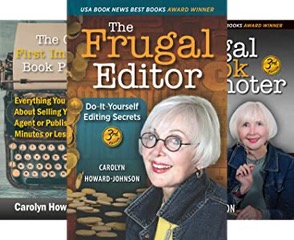Susie Kinslow Adams is a Missouri writer.
She writes nonfiction, most of it based on her own life.
I first met Susie years ago at a writer’s conference where I was presenting, and she became a coaching client soon after.
Susie describes her path to publication in this recent interview.
Suzanne Lieurance: Tell us about yourself as a writer and the author of several books and coloring books. How did you get started as a writer?
Susie Kinslow Adams: I cannot recall a time in my life when I didn't feel compelled to write.
In my rural high school, I was on the annual and school newspaper staffs and wrote articles for the local newspaper.
I married soon after graduation and made life choices that offered little opportunity to write.
SL: Your first book was about your life taking care of your mother in her later years. What was the process of writing that book like?
SKA: After the death of my first husband, I married a widowed preacher who encouraged me to write.
On a visit in our home, my mother became ill and was rushed to the hospital.
For the next eight years of ups and downs, we became her caregivers.
I felt God's call again to write, and write I did.
It seemed I could not write fast enough as her needs changed from day-to-day.
In 2014 My Mother My Child was published; 54 years after I had graduated high school and walked away from my calling.
God is patient.
SL: Tell us about Patches, the turtle, and how he came to be part of your “brand” as a writer and author.
SKA: After my first book was published, I felt inspired to do a Biblical coloring/activity book for children.
I wanted a critter, a voice for the stories, but not some silly drawing.
It had to be something real the kids (and adults) could connect with.
Patches the turtle is a real turtle with a history that soon will be revealed.
He is working on his third book, Patches Friendships.
Patches best friend is Pockets.
I love it when asked what “Patches Approved” on my logo means.
It's simple: if Jesus approves it, Patches approves it.
SL: Do you have a regular writing schedule? If so, what’s it like? If not, how do you work to get your books written and published?
SKA: I have tried to keep a writing schedule, but at 80 years young, I have accepted the fact that that's not me!
Yes, I can improve, but only to a point.
Like Popeye, “I am what I am.”
I take care to meet deadlines, I schedule deadlines for myself.
I have pencil and paper in every room of the house, the car, and my purse.
I stay ready to write when a thought worth keeping wanders through my head.
I set a personal deadline for the books I write and do my best to keep it.
SL: Writing a book and getting it published is only part of the journey. Marketing is often the most difficult part for authors, so what have you done to market your books?
SKA: Most of my books have been sold through book signings and speaking engagements, and through my website.
I need to learn more about how to market my books online.
Right now, I do Facebook, Twitter and Pinterest.
SL: What is the most enjoyable part of writing for you?
SKA: Seeing my work published continues to amaze me.
Knowing that my words can be used to inspire and encourage others is overwhelming.
To be able to follow my passion for writing is a wonderful gift.
SL: What is the most challenging or difficult part of writing for you?
SKA: Sometimes, it is simply learning to stay focused on the current project.
Right now, I have three books trying to vie for my attention.
In addition to that, there is my blog and short articles to write for periodicals.
SL: What is your best tip for other writers?
SKA: Do it! Just do it!
Chase that character out of your head who wants you to quit or says you aren't good enough.
Just write your thoughts as they come to you.
And never, ever believe you are too old or too young.
Chase those dreams now.
SL: What are you working on right now?
SKA: Three years before my husband passed away, we began working on our story.
I am determined to finish it soon.
The Rebel and Preacher Man is the true story of our lives.
It is a love story; our love and God's love for us.
It begins with me in jail in 1960 at age 17.
At the same time a fellow in his thirties accepted Jesus as his savior and was called to preach.
There is a lot of drama in it; much that is difficult for me to write but must be shared.
SL: Where can readers go to learn more about your books and to sign up for your mailing list?
SKA: I have an author page on Amazon.com with some exciting reviews.
You can sign up on my mailing list at http://www.susiekinslowadams.com/and receive a free cookbook.
Patches and I send out encouraging newsletters twice a month.
Suzanne Lieurance is a freelance writer, the author of over 40 published books and a writing coach at writebythesea.com.
Subscribe to her free newsletter, The Morning Nudge, for writing tips and resources delivered to your e-mailbox every weekday morning.
You'll also get immediate access to a private Resource Library for Writers.














.jpg)


.jpg)



